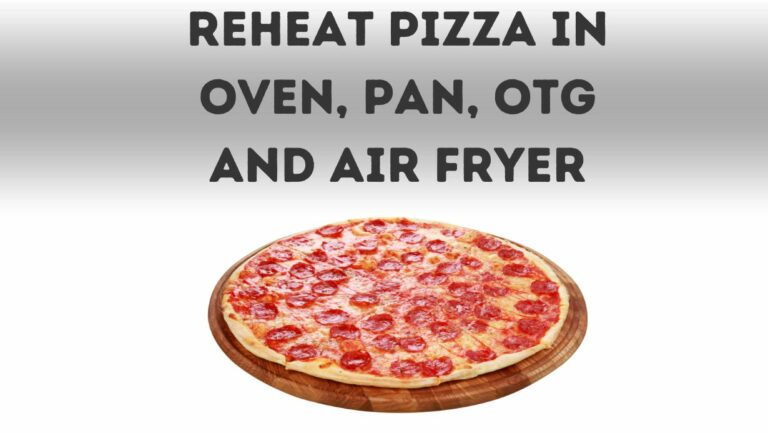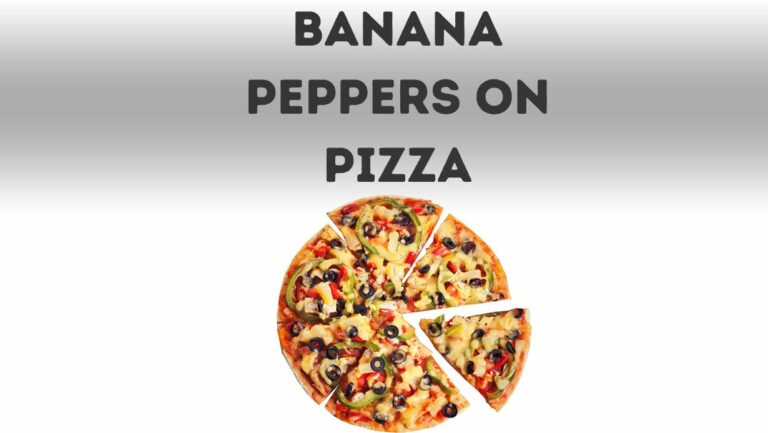
Pizza is a beloved food worldwide. Whether it’s a quick meal on a busy weeknight, a party food for a gathering of friends, or a treat enjoyed on a lazy weekend afternoon, pizza is a versatile and convenient option for satisfying hunger. But have you ever wondered how long pizza can sit out before it goes bad?
Or whether pizza has an expiration date? These are important questions for anyone who wants to enjoy pizza safely and avoid foodborne illnesses. In this blog post, we will explore the answers to these questions and provide you with tips for preserving pizza so you can enjoy it to its fullest potential.
So, whether you’re a pizza lover or just looking to learn more about food safety, read on to find out more about the shelf life of pizza and how to ensure that your pizza stays fresh and delicious.
Factors that Affect the Shelf Life of Pizza
There are several factors that can affect the shelf life of pizza, including the ingredients used, temperature, and humidity levels. The shelf life of pizza is influenced by the type and amount of toppings used, the type of crust, and whether or not it has been cooked. For example, pizzas with lots of vegetables and meats may spoil more quickly than pizzas with fewer toppings.
Temperature is another crucial factor in determining how long pizza can be left out before it goes bad. At room temperature, pizza can typically last for around two hours before it becomes unsafe to eat. However, in warmer environments, pizza can spoil even faster.
Humidity levels can also play a role in the shelf life of pizza. If the environment is very humid, the moisture in the air can cause the pizza crust to become soggy and spoil more quickly.
Ideal Time Frame for Leaving Pizza at Room Temperature:
As mentioned earlier, pizza can generally be left out at room temperature for around two hours. However, this is just a general guideline, and the exact amount of time that pizza can be left out depends on several factors, including the temperature of the room and the type of toppings used.
It’s worth noting that if pizza has been left out for more than two hours, it’s probably best to err on the side of caution and throw it away. Consuming pizza that has been left out for too long can lead to food poisoning and other health problems.
Risks of Consuming Pizza that Has Been Left out For Too Long:
Leaving pizza out for too long can result in the growth of harmful bacteria, which can cause food poisoning and other illnesses. Symptoms of food poisoning can include nausea, vomiting, diarrhea, and fever, and in severe cases, it can even be life-threatening.
Additionally, consuming pizza that has been left out for too long can also result in changes to the texture and flavor of the pizza. The cheese may become hard or rubbery, and the crust may become stale or soggy, making it less enjoyable to eat.
However, it’s best to consume pizza as soon as possible after it has been cooked, and to store any leftovers in the fridge or freezer to prevent spoilage. If you’re unsure whether your pizza is still safe to eat, it’s always better to err on the side of caution and throw it away.
Does Pizza Expire?

When it comes to determining whether or not pizza has expired, it’s important to understand the difference between expiration date and shelf life. Expiration date refers to the date that the pizza is no longer safe to consume, while shelf life refers to the length of time that the pizza can maintain its quality and freshness.
Factors that determine the expiration of pizza include preservatives and storage conditions. Most commercially-made pizzas contain preservatives that help to extend their shelf life. These preservatives are usually listed on the packaging and can include ingredients such as sodium benzoate, BHA, and BHT.
Storage conditions also play a critical role in determining the expiration of pizza. If pizza is left out at room temperature for an extended period of time, it can become a breeding ground for bacteria and other microorganisms, leading to spoilage and potential illness.
Consequences of consuming expired pizza can include food poisoning, stomach cramps, diarrhea, and vomiting. While it’s possible to recover from these symptoms in a few days, they can be especially dangerous for vulnerable populations such as pregnant women, young children, and elderly individuals.
To avoid the risks associated with expired pizza, it’s important to always check the expiration date before consuming, and to store pizza properly. If you’re unsure whether or not your pizza has expired, it’s best to err on the side of caution and dispose of it.
In the next section, we’ll discuss some tips for preserving pizza to help extend its shelf life and reduce food waste.
Tips for Preserving Pizza
Pizza is a popular food item that can be enjoyed by people of all ages. It is versatile, customizable, and can be eaten for breakfast, lunch, dinner, or even as a snack. However, if you do not consume an entire pizza in one sitting, you might be wondering about the best ways to preserve the leftover slices. In this section, we will discuss some tips for preserving pizza to ensure that it stays fresh and delicious for as long as possible.
How to Store Pizza Properly

Refrigeration:
-
- If you plan to consume your leftover pizza within the next few days, the best way to store it is in the refrigerator.
- Allow the pizza to cool down to room temperature before placing it in an airtight container or wrapping it in plastic wrap.
- Make sure to label the container with the date and type of pizza for easy identification.
- Pizza can be stored in the refrigerator for up to 4 days.
Freezing:
-
- If you do not plan to consume your leftover pizza within the next 4 days, you can freeze it for longer storage.
- Wrap each slice of pizza in plastic wrap and then place it in an airtight container or freezer bag.
- Label the container with the date and type of pizza.
- Frozen pizza can be stored for up to 2 months.
- To defrost frozen pizza, remove it from the freezer and place it in the refrigerator overnight. Once defrosted, you can reheat it using one of the methods described below.
Best Practices for Reheating Pizza
Oven:
-
- Preheat your oven to 375°F (190°C).
- Place the leftover pizza slices on a baking sheet or oven-safe dish.
- Bake the pizza in the oven for 10-12 minutes or until heated through.
- This method will result in crispy crust and melted cheese.
Microwave:
-
- Place the leftover pizza slices on a microwave-safe plate.
- Cover the plate with a damp paper towel.
- Microwave on high for 30 seconds to 1 minute, depending on the size of the slice.
- This method will result in a softer crust and less crispy toppings.
Suggestions for Reducing Food Waste:
- Consider ordering smaller pizzas if you know you will not be able to consume an entire pizza.
- Share your leftover pizza with friends or family members.
- Use leftover pizza slices to make a pizza salad or a breakfast pizza.
- Get creative with your pizza toppings and turn your leftover pizza into a new meal.
- Consider donating leftover pizza to a local food bank or homeless shelter.
Moreover, preserving pizza is easy if you follow these tips. By storing your leftover pizza properly, reheating it correctly, and reducing food waste, you can enjoy your favorite pizza for longer without compromising on taste or quality.
Final Thoughts on How Long Can Pizza Sit Out?
Pizza is a beloved food item that can be enjoyed in various ways. However, it is important to ensure that it is consumed within a reasonable time frame to avoid the risk of foodborne illnesses. In this blog post, we discussed how long pizza can sit out, whether pizza expires, and provided tips for preserving pizza.
We learned that the shelf life of pizza depends on various factors, such as the ingredients used, temperature, and humidity. It is best to consume pizza within two hours of being served or within four days if stored in the refrigerator. Additionally, while some pizza has an expiration date, others can be stored for a longer time with proper storage.
To preserve leftover pizza, we provided tips on how to store it properly in the refrigerator or freezer and best practices for reheating pizza using the oven or microwave. We also suggested ways to reduce food waste by getting creative with pizza toppings or donating leftover pizza to those in need.
In conclusion, it is essential to follow best practices for preserving pizza to ensure that it remains fresh and delicious for as long as possible. By following the tips we discussed in this blog post, you can reduce food waste, save money, and promote sustainability. Remember to always check the freshness and expiration date of your pizza and consume it within a reasonable time frame to avoid the risk of foodborne illnesses. Enjoy your pizza while minimizing waste and promoting a healthier planet!

Handsomepizza.com is the brainchild of two pizza-obsessed friends who wanted to share their love of pizza. We are dedicated to bringing you the latest news, reviews, and insights on pizza.






